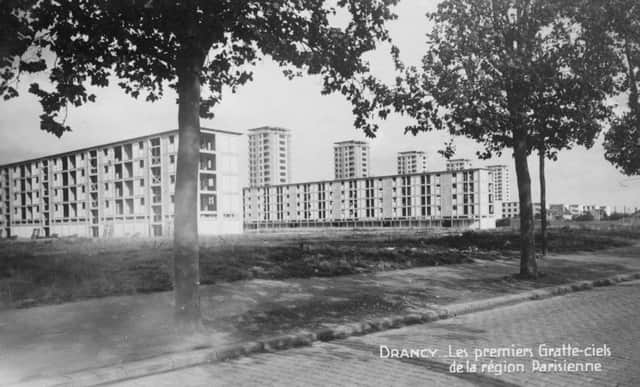South Shields seaman held captive with those on way to death camps


Today, Alan Clark, explains how his grandfather, now serving as an engineer aboard the SS Gracefield in the Second Word War, again fell foul of the German navy.
Having left Montevideo in 1940 to join a Mid-Atlantic convoy, the Gracefield was sunk on June 14 of that year, by the German raider Vir, and John and his fellow crewmen were taken aboard as prisoners.
Advertisement
Hide AdAdvertisement
Hide AdHe remained on the Vir for five months (the captain refusing to transfer them to another ship due to the poor conditions on board – sadly that ship was later captured by the British, meaning the crew would have been freed) before being taken to Bordeaux by the supply vessel Rio Grande.
Following the loss of the Gracefield, John’s wife, Mary Anne, was told by the vessel’s shipping company that her husband was missing and presumed dead.
It wasn’t until January 4, 1941, that she learned that he was alive, but a prisoner of the Germans – resulting in the cessation of her “widow’s” pension, which she had to repay.
Once in France, John, now 61 years old, and the rest of the crew were taken to Drancy, a holding camp for Jewish men and others en route to the Nazis’ concentration camps.
Advertisement
Hide AdAdvertisement
Hide AdIn a letter to Alan, Mr Gabe Thomas, former registrar general of shipping and seamen, explains what happened to them and other captured British sailors.
“Drancy, on the outskirts of Paris and within view of the Eiffel Tower, was the site of a notorious civilian and political internment camp, used as a collection camp for Jews, civilian internees and political prisoners.
“All the Jewish prisoners were male, almost all non-French.
“The camp consisted of a massive French Government tenement housing project which was unfinished at the time of the occupation of France. It was to this that some 225 men, the crews of the Delambre, Bruges, Gracefield, Wendover, Tela and Natia, were brought in January 1941. They were followed by further groups transferred from St Medard.
“The ex-inmates have described the camp at Drancy as being three unfinished apartment blocks, four floors high, surrounding a central square which was used as a parade ground.”
Advertisement
Hide AdAdvertisement
Hide AdThe apartments were just bare concrete boxes, with no toilets, no glazing in the windows and no electric lights, and only one water tap to each stairway. The inmates had to sleep on dirty straw on bare concrete floors.
Fortunately one floor of the POW’s apartment was full of abandoned French Army coats which helped them keep warm.
Mr Thomas goes on to reveal that the food supplied by the French was appalling, consisting mainly of cooked entrails and weak cabbage-water soup.
“The tap water was contaminated and most of the PoWs suffered dysentery and diarrhoea. The only latrines were one or two sentry-box sized huts which soon became appallingly filthy.
Advertisement
Hide AdAdvertisement
Hide Ad“Fortunately the Jewish prisoners were allowed visits from friends and family who brought food which was shared.
“A group of Quakers, also interned, managed to get the American Embassy to arrange for food to be sent in for the English prisoners. These supplies of Horlicks, soup cubes, cheese and marmalade were a welcome supplement to the starvation diet officially provided.”
Meanwhile, A Jewish internee, Doctor Rabinowitch, had set up a makeshift hospital on the second floor.
“Here he treated the many sick amongst the merchant seamen, many of whom, after five months at sea and their terrible experiences aboard the Rio Grande, had been reduced to a lice-ridden, mass of sores.”
Advertisement
Hide AdAdvertisement
Hide AdIn late April 1941, the PoWs in Drancy were given one hour’s notice, handed a small piece of bread and some fat and then marched through the suburb of Le Bourget, to a marshalling yard where a train awaited them.
On the way to the train, Frenchwomen, lining the streets tried to pass food to the marchers. Attempts to prevent this resulted in the guards being kicked, spat upon, pushed and scratched by the women.
At the train, as many men as possible were packed into cattle trucks.
One bucket per truck was provided for the occupants’ toilet needs and when full, was emptied through a ventilation slot.
Advertisement
Hide AdAdvertisement
Hide AdNo food was provided until the train reached Achen, two days later.
There the toilet bucket was removed, filled with soup and handed back! By then the trucks’ occupants were so ravenous and thirsty they drank the soup without worrying too much about the bucket’s previous contents.
They were still desperate for water, but none was ever supplied.
After a three-day journey they arrived at Bremervorden, from where they were marched to Sandbostel, and on to Milag.
Advertisement
Hide AdAdvertisement
Hide AdThere they were ordered to help with the construction of the prison camp – the place John would be held for the more than three years.
Next week we will tell you how John fared in the camp and how he finally managed to get back to Shields.